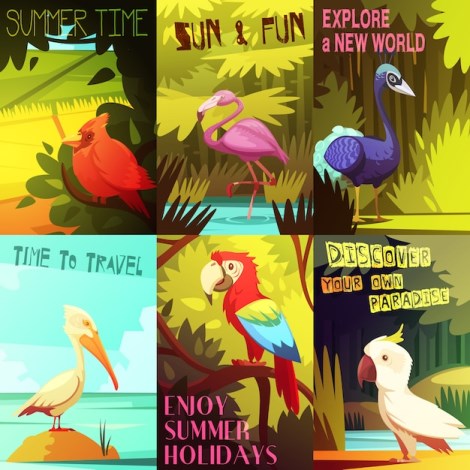Interesting Facts About Tropical Rainforests

Tropical rainforests are home to over 50% of the world’s plant and animal species.
The Amazon rainforest alone produces 20% of the world’s oxygen.
Some trees in the rainforest can grow up to 200 feet tall.
The rainforest canopy is like a giant umbrella, blocking up to 90% of sunlight before it reaches the ground.
The sounds of the rainforest can be heard up to 2 miles away.
Rainforests are sometimes called the lungs of the Earth as they help regulate the global climate.
The rainforest floor is teeming with fungi and insects, which help decompose dead plant and animal matter.
Many species of plants in the rainforest have medicinal properties, used by indigenous tribes for centuries.
The rainforest is so dense and complex that new species are still being discovered every year.
Over 3000 fruits are found in the rainforest, many of which are not found anywhere else in the world.
Rainforest trees can absorb up to 200 gallons of water from the ground each year.
The largest flower in the world, the Rafflesia, can be found in the rainforest.
The rainforest is home to the world’s smallest monkey species, the pygmy marmoset.
Over 25% of modern medicines have their roots in rainforest plants.
Some trees in the rainforest can live up to 1000 years.
The rainforest is incredibly diverse, with over 3000 species of fish.
The rainforest produces natural resources like rubber, oil, and various fruits.
Interesting Facts About Tropical Rainforests part 2
The annual deforestation rate of the rainforest is estimated to be about 55 million acres.
The rainforest is a hotspot for bird watching, with over 1000 different species.
Many indigenous tribes have lived in the rainforest for thousands of years, relying on its resources for survival.
Some rainforest trees have buttress roots that help support them in the wet and soggy soil.
The rainforest is the perfect environment for orchids, with over 25,000 different species.
Some species of trees in the rainforest can grow new branches from their trunks.
The thick foliage of the rainforest acts as a natural sound barrier, muffling outside noises.
The rainforest has its own unique weather patterns, influenced by its dense vegetation and high humidity.
Many species of animals in the rainforest are still not studied or understood by scientists.
The rainforest is home to various venomous snakes, including the famous green anaconda.
The bright colors of many rainforest plants and animals help them blend in with their surroundings.
The constant humidity in the rainforest makes it a perfect breeding ground for mosquitos.
The rainforest is a paradise for nature photographers, with its vibrant colors and unique wildlife.
Some species of trees in the rainforest are capable of producing fruits all year long.
The rainforest is an important habitat for endangered animals, such as the orangutan and Sumatran tiger.
The understory layer of the rainforest is usually dimly lit, with little sunlight reaching it.
The rainforest is home to the world’s smallest frog, the gold frog, which is only about the size of a fingernail.
The diverse bird species of the rainforest play a crucial role in seed dispersal.
Many species of ants have developed impressive farming techniques in the rainforest, cultivating fungi for food.
The rainforest has a complex food chain, with each species playing a unique role in maintaining the ecosystem.
Rainforest soils are not very fertile, as most nutrients are stored in the vegetation above.
The rainforest has a high rainfall rate, with some areas receiving over 400 inches of rain per year.
The rainforest is a great place to study symbiotic relationships, as many species depend on each other for survival.
The rainforest is a treasure trove for scientists studying climate change, as it acts as a natural carbon sink.
Some tree trunks in the rainforest are covered in phyllodes, which help protect them from herbivores.
The rainforest is home to the world’s largest rodent, the capybara.
The rainforest is the oldest ecosystem on Earth, dating back over 100 million years.
Visiting the rainforest can be a truly immersive experience, with its exotic sounds, sights, and smells.